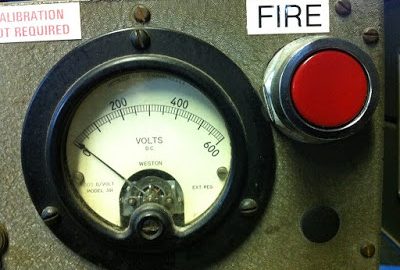 |
| Image courtesy of prairiemomof2 |
Have you heard the saying, “Ready. Fire. Aim?”
What does it mean?
Shoot before you aim. Shoot (or do anything) before you think or before you think it through. Shoot before you know what you’re shooting at. Shoot before you know why you’re shooting.
Take your pick.
The saying has a few different definitions, but I believe it refers to taking immediate action, or just reacting to something, without even thinking through the options or the implications. Oftentimes, we take immediate actions that are usually based on wrong assumptions or previous experiences that might not apply to the situation at hand.
Some believe that’s a good way to operate, but others believe it’s a business killer. While I’m all for being agile, doing what’s best in the moment, and asking for forgiveness later, I typically tend to lean to the other side when it comes to strategy and decision making, being a bit more methodical and stepping back, looking at the big picture, and understanding implications of the decision or action. I’ve seen the opposite happen too often, and typically with negative outcomes.
If you’ve ever worked with or for someone who reacts before getting all the facts and before thinking things through, you know what I’m talking about.
1. How do you make decisions? Do you move forward with an initiative and ask questions later? Or do you get all the details, think it through, and then proceed?
2. Do you think you can make organizational changes (including your culture) by making snap judgments? Without thinking through the implications and outcomes on your employees? On your customers?
3. When a customer asks for something that seems out of the norm for what you do – or you simply don’t know how or if you can do it – is your knee-jerk response to say, “No?”
4. If a customer is rude, is it your immediate reaction to be rude back?
The Ready. Fire. Aim. approach to decision making happens at both strategic and tactical levels. Regardless of level, it can be dangerous. Buy yourself a little bit of time and think about what your response means to the business, to employees, to customers.
I recently stumbled upon a UPenn online book called Going through the goop: An introduction to decision making. It provides a lot of examples on decision theory and how to make the best decision.
They define decision as a situation in which:
- You have more than one option.
- The option you choose can have some effect on the outcome.
- You can think about which option to choose.
What I like is the concept of GOOP, which stands for the four things you need to consider when you’re making a decision:
- Goals: Goals result from decisions. What is the (desired) result of the decision?
- Options: Options affect outcomes. What are the alternatives to reach your goal? What else could you do?
- Outcomes: What are the potential and alternative outcomes, given those options?
- Probabilities: How likely is each outcome?
Clearly, all four are critical to decisions and decision making. It’s really tough to think about those four in the split second that you say, “Ready. Fire.” Perhaps it’s time to reconsider your approach – and Aim first.
Our plans miscarry because they have no aim. When a man does not know what harbor he is making for, no wind is the right wind. -Lucius Annaeus Seneca
Business & Finance Articles on Business 2 Community(78)








